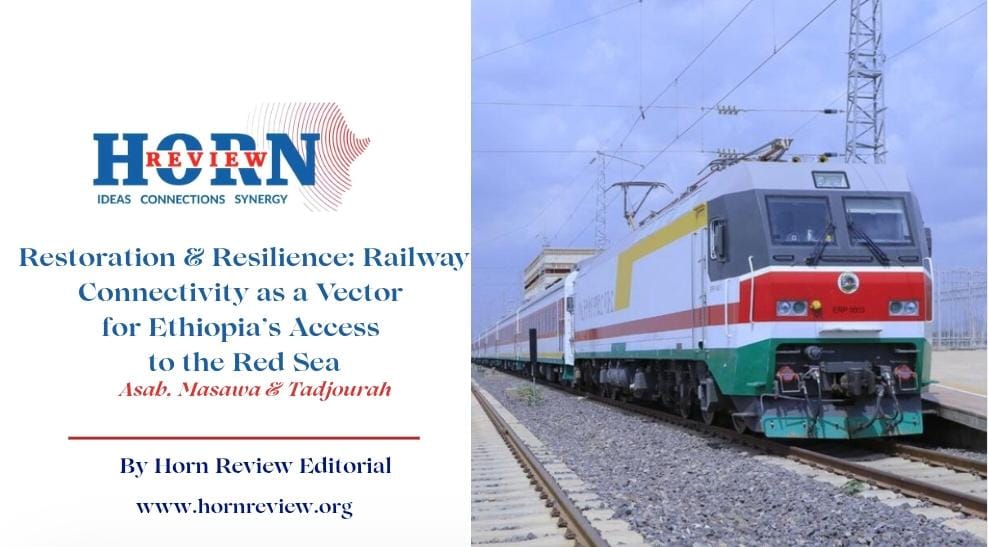Ethiopia’s Strategic Push for Maritime Access: The Weldiya–Mekelle Railway Initiative
Ethiopia’s renewed maritime ambitions via the Red Sea mark a significant step in its historical and geopolitical journey. This initiative seeks to achieve two main objectives: restoring historical connectivity to coastal waters and securing a vital, resilient maritime lifeline for the country. Through the integration of advanced infrastructure, diplomatic engagement, and multilateral coordination, Ethiopia is redefining its place in the regional landscape, especially in light of ongoing geopolitical complexities.
Historical Context of Maritime Access
The notion of maritime access is deeply rooted in Ethiopia’s history. Ports such as Assab and Massawa were once gateways to global trade before geopolitical changes in the late twentieth century cut off access. Prime Minister Abiy Ahmed has consistently emphasized the importance of reintegrating maritime routes as not merely a legacy concern but a strategic necessity for economic resilience and trade diversification. This dual-focus on restoration and structural need drives Ethiopia’s policy formulation and national planning.
The Welidia–Mekelle Railway: A New Era in Connectivity
Launched on October 21, 2025, the Weldiya–Mekelle standard-gauge railway is a keystone project that highlights Ethiopia’s strategic ambitions. Spanning approximately 216 kilometers, this railway connects northern highlands with the crucial ports of Assab, Massawa, and Djibouti’s Tadjourah.
Operational Features and Significance
This project exemplifies a sophisticated blend of technical design and regional integration. Detailed in a 21-page report presented at the National Railway Business and Investment Summit, it outlines construction specifications and operational plans, including logistics coordination and tariff frameworks. This comprehensive approach ensures that Ethiopia’s strategic infrastructure aligns with both technical capabilities and institutional realities.
Separate Paths: Avoiding Legacy Issues
It is essential to note that the Weldiya–Mekelle project is distinct from the Awash–Kombolcha–Hara Gebeya (AKH) railway, which has faced delays and arbitration challenges that could threaten investor confidence. By compartmentalizing these legacy issues, Ethiopia aims to build an independent trajectory for the Weldiya–Mekelle corridor, reinforcing strategic continuity and financial feasibility.
Infrastructure and Financial Strategy
The corridor’s single-track, standard-gauge design is an intentional choice, enhancing compatibility with broader East African transport networks. This connectivity not only simplifies logistics but also invites international investment. With an estimated cost nearing USD 1.6 billion, Ethiopia’s multifaceted funding model incorporates domestic support, multilateral assistance, and private-sector investment, thereby spreading risk and maximizing appeal to financiers.
Engagement with Regional Dynamics
Ethiopia’s history of complicated relations with neighboring countries, particularly Eritrea, necessitates a cautious and strategic approach. Eritrea’s defensive posture towards Ethiopia’s maritime objectives creates a challenging environment. Still, the phased implementation and the use of triangulated access points, including potential collaborations with Djibouti and ongoing modernization assessments for ports, help to mitigate risks associated with instability.
Enhanced Maritime Connectivity: A Triangulated Approach
Ethiopia’s engagement with Djibouti offers additional avenues for enhancing port connections, prominently demonstrated by a 2024 proposal for administrative control over Tadjourah Port. This diversification reduces reliance on any single port and aligns with Ethiopia’s broader maritime strategy. Additionally, the 2018 assessments for Massawa port reflect foresight in modernizing facilities to ensure integrated operations.
Strategic Signaling and Operational Capacity
Infrastructure serves a dual purpose—facilitating trade and signaling Ethiopia’s capabilities to both regional actors and international stakeholders. The operational capacity afforded by the functional railway, combined with adherence to African Union protocols, strengthens Ethiopia’s negotiating position and demonstrates commitment to systemic stability.
Risk Management and Future Viability
Ethiopia’s approach to the Weldiya–Mekelle corridor is deeply rooted in risk management, designed to anticipate and respond to financial, operational, and geopolitical challenges. By diversifying funding sources, structuring investor engagement, and implementing phased construction, Ethiopia significantly enhances corridor resilience, securing strategic options amid evolving regional dynamics.
Conclusion: A Multifaceted Strategic Framework
The Weldiya–Mekelle railway represents a paradigm shift in Ethiopia’s maritime strategy, entwining historical restoration with structural necessity. By coherently aligning infrastructure, finance, and regional collaboration, Ethiopia establishes a tangible pathway for renewed access to the Red Sea. This multifaceted strategy not only bolsters national development and trade security but also positions Ethiopia as a proactive agent in regional engagement, building a resilient and adaptable maritime future.
For further reading on Ethiopia’s maritime strategies, explore resources from the African Union or Ethiopian Railway Corporation.
This article provides a distilled yet comprehensive overview of Ethiopia’s Weldiya–Mekelle railway initiative, effectively combining historical context, infrastructural details, and strategic significance to enhance its relevance and comprehension.
